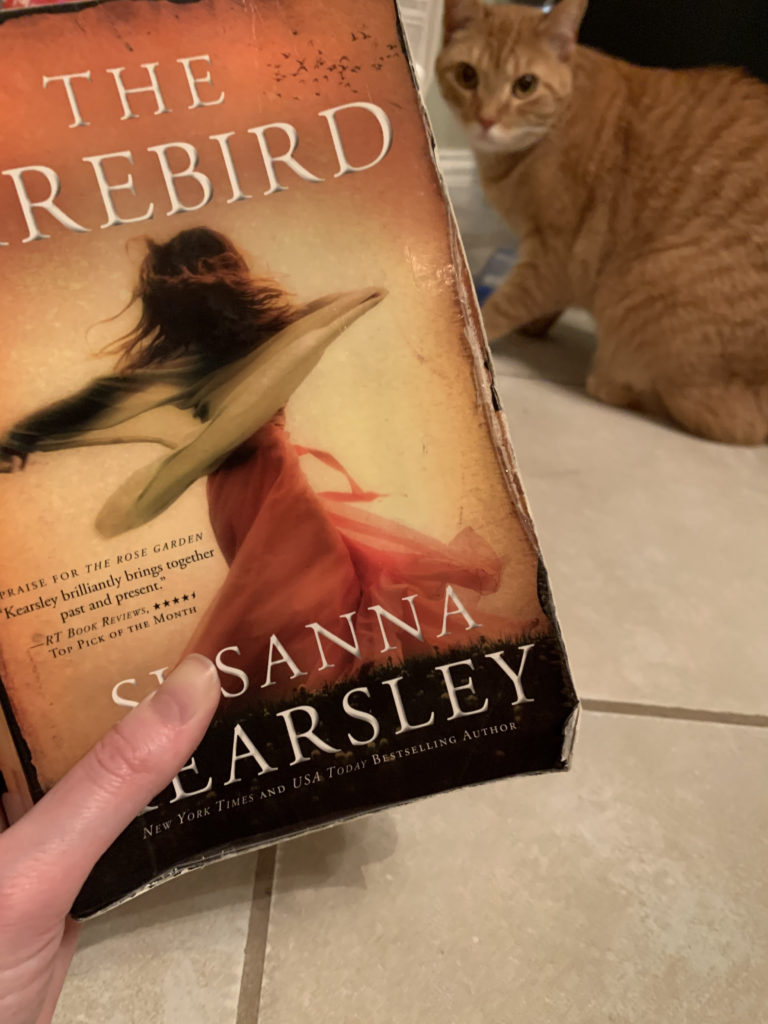I thought I had written all I had to say about Susanna Kearsley when I reviewed The Winter Sea. Following the library ladies’ advice, I picked up The Shadowy Horses. I enjoyed it but didn’t find it all that special. However, I had to read The Shadowy Horses to meet characters from The Firebird. THAT one hit it out of the park! Combining two very different and unrelated books, The Firebird taught me some interesting techniques for building a sequel.
Building a Sequel
Kearsley pulls two story aspects from The Winter Sea into The Firebird. First, we structurally experience The Firebird as we did The Winter Sea. We follow both a contemporary character, Nicola, and a character from the past, Anna, in two parallel story arcs. Secondly, Kearsley brings back characters from The Winter Sea into The Firebird. Indeed, most of the characters Anna meets appeared originally in The Winter Sea. With this background knowledge, Kearsley builds some serious dramatic irony. We know how characters relate to Anna and her parents before Anna does herself. I, for one, yelled at Anna every few pages in a vain attempt to transfer my knowledge through the pages of the book. That dramatic irony made me much more invested in seeing how her story would work out.
Though The Firebird is officially titled “Slains, book 2” on Goodreads and Amazon, the book truly combines both The Winter Sea and The Shadowy Horses. From The Shadowy Horses, Kearsley brings back one of the best characters, Robbie McMorran. We also get to glimpse back into the McMorran family’s lives and receive hints of happiness for the main characters of The Shadowy Horses. Secondly, because Kearsley already had to put in a lot of work to create the willing suspension of disbelief in The Shadowy Horses, she could skip all that explanation and move right into the action. We don’t need to be told why the second sight could be true; we just jump straight into experiencing it.

The Unexpected in The Firebird
Kearsley better hides her plot twist in The Firebird than in The Winter Sea. Whereas I saw the solution in The Winter Sea right off the bat, Kearsley hid key details that would have given away the surprise until the very end of the book. In fact, it wasn’t until I reread and ruminated on certain events that the clues whacked me on the head like a 2×4. The reveal of one character’s true identity made the writer in me very upset that I didn’t catch on sooner, but made the reader in me extremely emotional. (I literally gasped and started shaking with tears. It’s almost embarrassing.)
Return to Dual Story Arcs and Parallel Plot Lines
Technically speaking, The Firebird is the best written of Kearsley’s novels. She pulls the best elements from two of her previous books and adds in new layers of story. Where her previous books pulled parallels simply to build suspense, The Firebird uses parallel story lines to shape character development. Our narrator and main character, Nicola, learns to accept her identity both in her adventure to follow Anna’s footsteps and in watching Anna’s own fight for identity.
This shaping of new characters as they learn from others’ stories reminds me of how God works in our lives. We can learn our strengths, weaknesses, and abilities by listening to others’ experiences. God made us to be communal people. (Yes, I say this as an introvert.) Oftentimes, I recognize aspects of myself in another, and that encourages me or cautions me in how I act going forward. What a beautiful, intricate plan God designed when He gave us community!

Comments are closed.